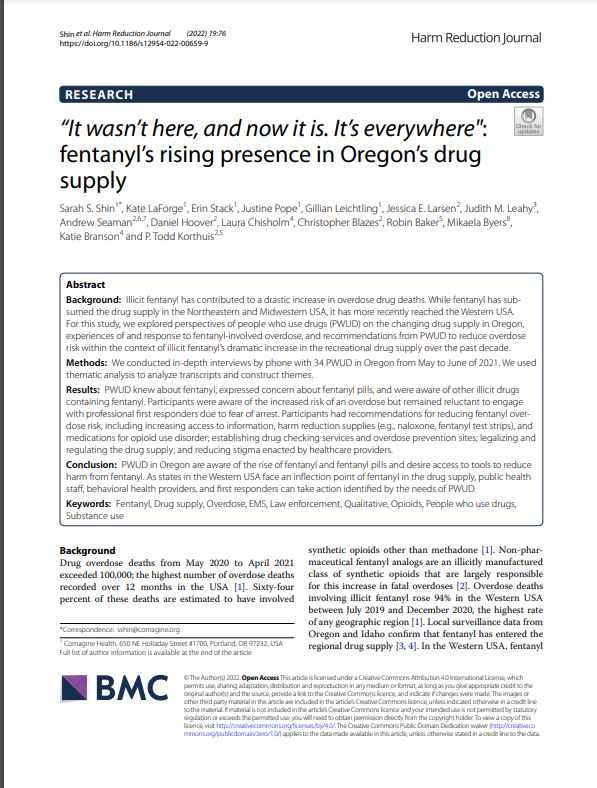By Michael J. Zoorob,; Ju Nyeong Park,; Alex H. Kral,; et al
Importance: With the implementation of Measure 110 (M110) in 2021, Oregon became the first US state to decriminalize small amounts of any drug for personal use. To date, no analysis of the association of this law with overdose mortality has fully accounted for the introduction of fentanyl-a substance that is known to drive fatal overdose-to Oregon's unregulated drug market.
Objective: To evaluate whether the decriminalization of drug possession in Oregon was associated with changes in fatal drug overdose rates after accounting for the rapid spread of fentanyl in Oregon's unregulated drug market.
Design, setting, and participants: In this cohort study, the association between fatal overdose and enactment of M110 was analyzed using a matrix completion synthetic control method. The control group consisted of the 48 US states and Washington, DC, all of which did not decriminalize drugs. The rapid spread of fentanyl in unregulated drug markets was determined using the state-level percentage of all samples reported to the National Forensic Laboratory Information System that were identified as fentanyl or its analogues. Mortality data were obtained from the Centers for Disease Control and Prevention for January 1, 2008, to December 31, 2022. Data analysis was performed from fall 2023 through spring 2024.
Exposures: Measure 110 took effect in Oregon on February 1, 2021.
Main outcomes and measures: The primary outcome assessed was fatal drug overdose rates per half-year. A changepoint analysis also determined when each state experienced a rapid escalation of fentanyl in its unregulated drug market.
Results: In this analysis, rapid spread of fentanyl in Oregon's unregulated drug supply occurred in the first half of 2021, contemporaneous with enactment of M110. A positive crude association was found between drug decriminalization and fatal overdose rate per 100 000 per half year (estimate [SE], 1.83 [0.47]; P < .001). After adjusting for the spread of fentanyl as a confounder, the effect size changed signs (estimate [SE], -0.51 [0.61]; P = .41) and there was no longer an association between decriminalization and overdose mortality in Oregon. Sensitivity analyses were consistent with this result.
Conclusions and relevance: In this cohort study of fatal drug overdose and the spread of fentanyl through Oregon's unregulated drug market, no association between M110 and fatal overdose rates was observed. Future evaluations of the health effects of drug policies should account for changes in the composition of unregulated drug markets.
JAMA Netw Open. 2024;7(9):e2431612. doi:10.1001/jamanetworkopen.2024.31612






